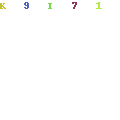To prevent sludge and sewage from 25 storm water drains between Bandra and Dahisar from flowing into the sea, Brihanmumbai Municipal Corporation (BMC) has planned in-situ treatment of sewage from the drains. This will be done with the help of Indian Institute of Technology-Bombay’s (IIT-B) N-Treat Technology, civic officials said on Thursday.
Storm water drains or nullahs, as they are popularly called in Mumbai, carry rain water into the sea. However, residential and commercial shanties have mushroomed on their banks and discharge untreated sewage directly into the nullah channels. As a temporary measure to deal with the existing pollution in the nullahs, the civic body will use the N-Treat technology, devised by SINE IIT Bombay Company or the Society for Innovation and Entrepreneurship, an umbrella organisation at IIT-B.
What is N-Treat technology?
N-Treat is a seven-stage process for waste treatment that uses screens, gates, silt traps, curtains of coconut fibres for filtration, and disinfection using sodium hypochlorite. According to the detailed project report for N-Treat, a copy of which is available on the civic body’s website, it is a natural and environment friendly way for sewage treatment. Its set up takes place within the nullah channels, that is through the in-situ or on-site method of treatment, and does not require additional space.
What does the process involve?
The first stage involves screening to prevent the entry of floating objects such as plastic cups, paper dishes, polythene bags, sanitary napkins, or wood. IIT-B has proposed to install three coarse screens, the first with 60 mm spacing for removal of large floating matter, the second with 40 mm spacing, and the third with 20 mm spacing. The second stage has proposed construction of a silt trap, which creates an inclination and ‘parking spot’ on the bed of the nullah for sedimentation.
Subscriber Only Stories
The next three stages are installation of ‘bio zones’ in the form of coconut fibre curtains that will act as filters and promote growth of biofilm to help in decomposition of organic matter. A floating wetland with aquatic vegetation planted on floating mats has been proposed.
Aside from a floating bed on the surface, IIT-B has proposed suspending floating rafts vertically, called florafts. According to its proposal, “Their hanging roots would provide a large surface area for passive filtration as well as development of microbial consortium. In the floating wetlands, plants acquire nutrition directly from the water column for their growth and development, thus reducing the organic as well as inorganic pollutants.” The final stage for sewage treatment will include disinfection using sodium hypochlorite, to kill the bacteria in the water.
How will it be used by BMC?
A senior civic official said: “BMC approached IIT-B to submit a Detailed Project Report for the project. The N-Treat method suggested to the civic body is cost effective, as it does not require manual pumping, and saves electricity, and does not require extensive man-power for maintenance.”
The floating matter will be removed daily, silt deposits from the silt traps will be removed once in four months, and plants will be trimmed as required. The floating matter collected every day will be disposed of at the nearest municipal waste collection point daily.
This project will deal with the collective water flow of 1,11,150 kilo litres of water per day from the 25 nullahs, having an overall length of 2.9 km. “The project will take place over the next five-and-a-half years, and the first six months will be required for installing the equipment. We will have to remove the equipment during the monsoon months each year, for unhindered flow of water in the nullahs,” the civic official said.
Source: https://indianexpress.com/article/explained/explained-iit-bombay-to-help-treat-mumbais-sewage-with-new-tech/


